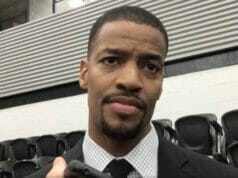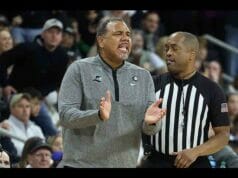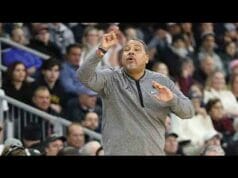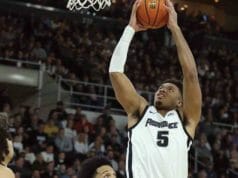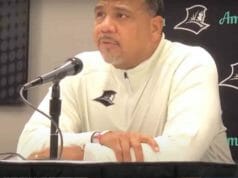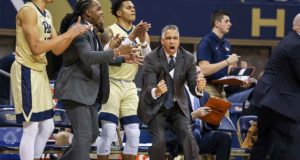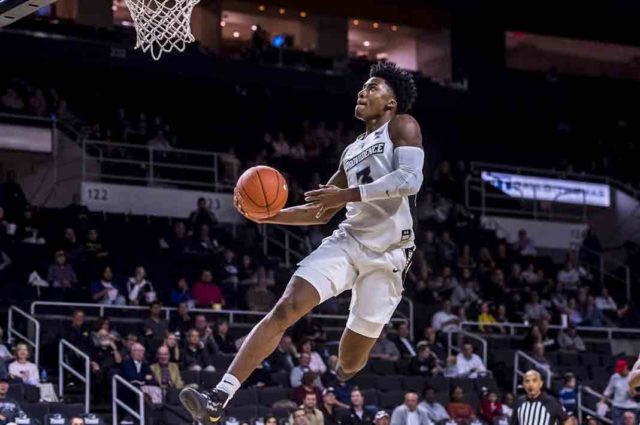
Earlier this year, when Providence was preparing for a match-up with Creighton and their star point guard Marcus Zegarowski, we took a deep dive on how the Massachusetts native and Tilton School alum had blossomed into one of the best players in the Big East in less than two years and, in so doing, also differentiated himself from other top prospects in New England’s ultra-talented 2018 class.
Now, we’re going to extend that lens and “re-rank” the class of 2018 after having the benefit of watching two more years of action against higher degrees of competition. Who shows the highest long-term ceiling now? The answer is vastly different than it was two years ago.
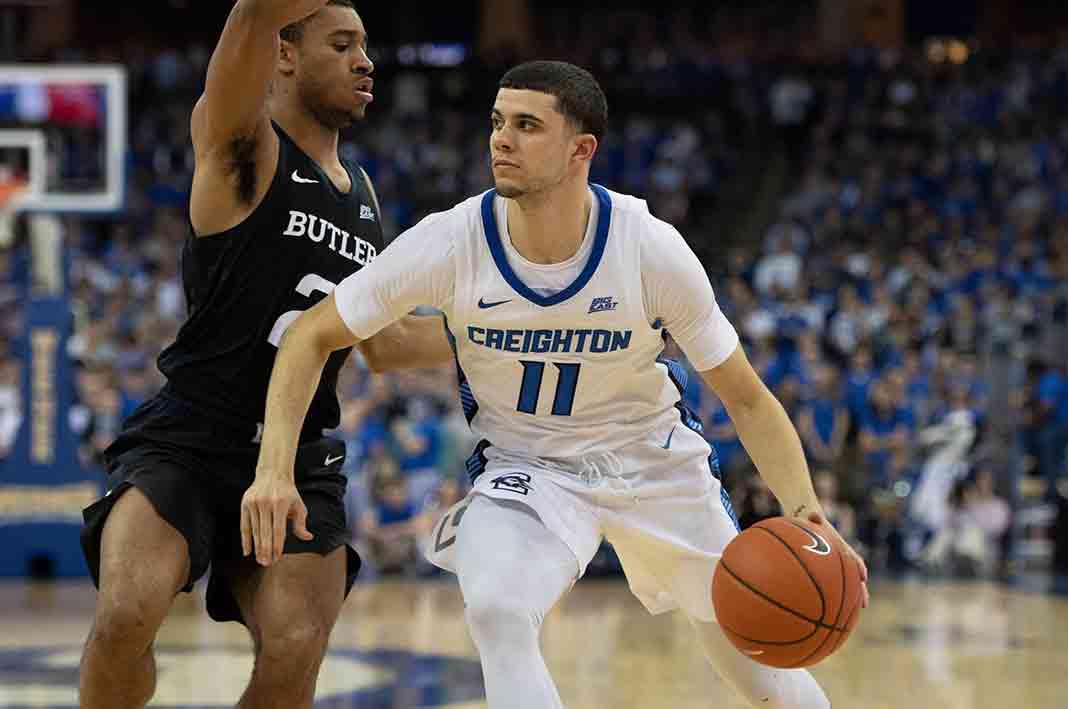
#1 Marcus Zegarowski, Tilton School, Creighton (Original Ranking #10)
2019-20 Stats: 34.6min, 16.1pts, 5.0ast, 3.8ast, 1.1stl, 48.8% FG, 42.4% 3pt, 76.2% FT
That Zegarowski made an immediate impact at the college level, was not a surprise. Hardly in fact.
He finished inside the ESPN 100 and had established a long resume of success against very high levels of competition. What Zegarowski seemed to lack, relative to the rest of the class, was the same long-term ceiling in terms of both the positional size and extra gear of explosiveness to differentiate himself at that highest level.
His competitiveness and passion for the game though, were always his best attributes, and in retrospect, we should have put more emphasis on them because now, Zegarowski isn’t just poised to be one of the best guards in college basketball next season, but also a candidate to make an early jump to the NBA, where he has drawn comparisons to the likes of Fred Van Vleet, the former Wichita State guard who didn’t have great measurables but has exceeded expectations in the NBA through his tenacity and skill-set.
#2 David Duke, Cushing Academy, Providence (Original Ranking #3)
2019-20 Stats: 32.2min, 12.0pts, 4.2reb, 3.2ast, 2.2to, 40.9 % FG, 42% 3pt, 79.3% FT
Expectations were high on Duke upon his arrival at Providence, both locally because of comparisons to Kris Dunn and the pressure of coming back to his hometown, as well as nationally after a big performance at the Adidas Eurocamp.
The reality is that Duke’s freshman year didn’t really live up to the hype as he predictably struggled to shoot the ball and simultaneously had more difficulty transitioning to the point guard position than expected. There was notable growth as a sophomore though as he moved off the ball and saw his numbers rise across the board.
While Duke is still a work in progress, the strides he’s made with his jumper are significant and he continues to possess the physical upside and two-way potential that had us so intrigued in the first place.
In short, he wasn’t the immediate hit some expected but there are still lots of reasons to be optimistic in the long-run.
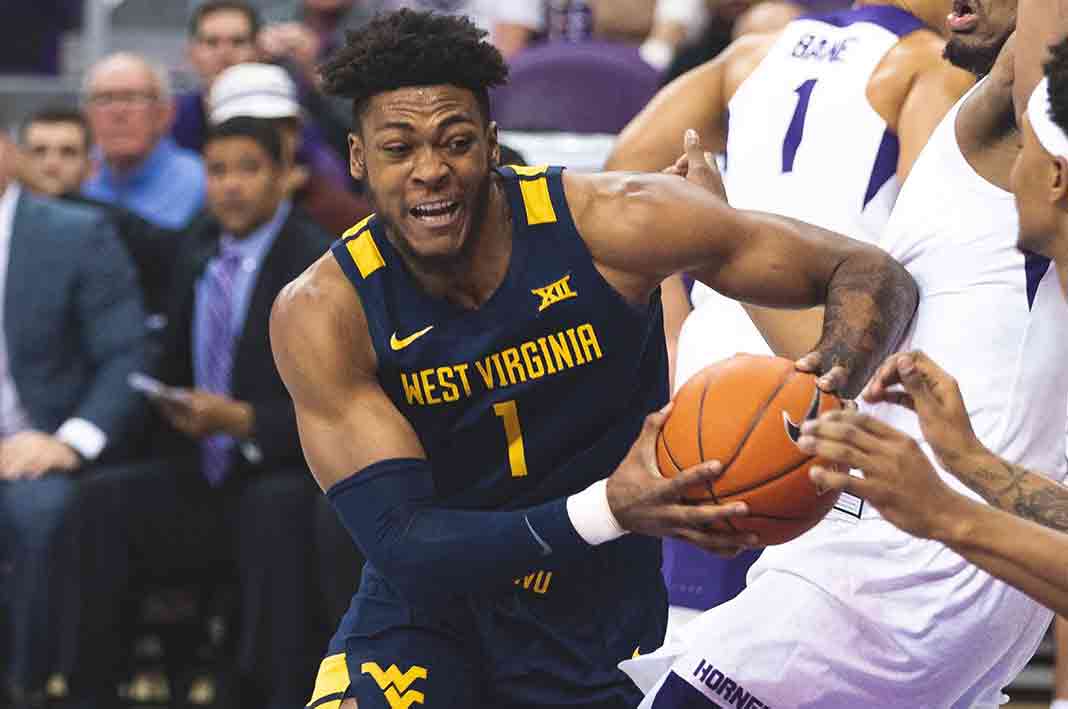
#3 Derek Culver, Brewster Academy, West Virginia (Original Ranking #6)
2019-20 Stats: 24.5min, 10.4pts, 8.6reb, 1.7ast, 2.3to, 0.8blk, 0.8stl, 45.7% FG, 51.7% FT
Culver’s physical dominance was never in question.
He was every bit of 6-foot-9, mobile, explosive, and powerful. The questions had much more to do with his maturity and decision-making. Early on, it seemed those concerns were legitimate as he was suspended for the first semester of his freshman year by head coach Bob Huggins.
When he returned though, Culver showed the type of potential he had always been capable of – going for 11.5 points and 9.9 rebounds on the season. That production dipped slightly as a sophomore, after the arrival of Oscar Tshiebwe, but ultimately there’s no denying Culver’s physical tools, finishing ability, rebounding prowess, or even defensive gifts when he’s properly motivated and focused.
Two years later and that’s still the essence of the evaluation – he has undeniable talent and still clear red-flags. Next year will be important. He’s not a floor-spacer or much more than a finisher offensively and he doesn’t provide quite as much floor-spacing as you want out of your five, so he needs to show he’s continuing to mature and become lower maintenance.
#4 Simisola Shittu, Vermont Academy, Windy City Bulls (Original Rankings #1)
2019-20 Stats: 20.2min, 12.3pts, 6.4reb, 1.3ast, 1.6to, 1.3stl, 0.5blk, 57% FG, 56% FT
A McDonald’s All-American and five-star national prospect coming out of high school, Shittu tore his ACL at the end of his senior year and got a late start on his freshman year at Vanderbilt, ultimately averaging 11 points and 7 rebounds per game in 27 minutes for a team that went 0-18 in SEC play.
He declared for the draft regardless, went undrafted, played one game for the Grizzlies in the NBA Summer League, and was subsequently signed by Chicago and designated to their G-League affiliate.
While Shittu’s size and physical tools were always a fit for the very highest level, he was a total non-shooter, and that hasn’t changed in the last two years. What he did have though was a unique ability to handle and pass the ball for his size, so much so that he even showed some point forward type tools.
That part of his game hasn’t translated, and compounded with his inability to stretch the floor, has left him very limited offensively (he’s listed as a C/F on the G-League website).
Now his chances of playing his way into the NBA have more to do with defensive versatility than they do offensive ability.
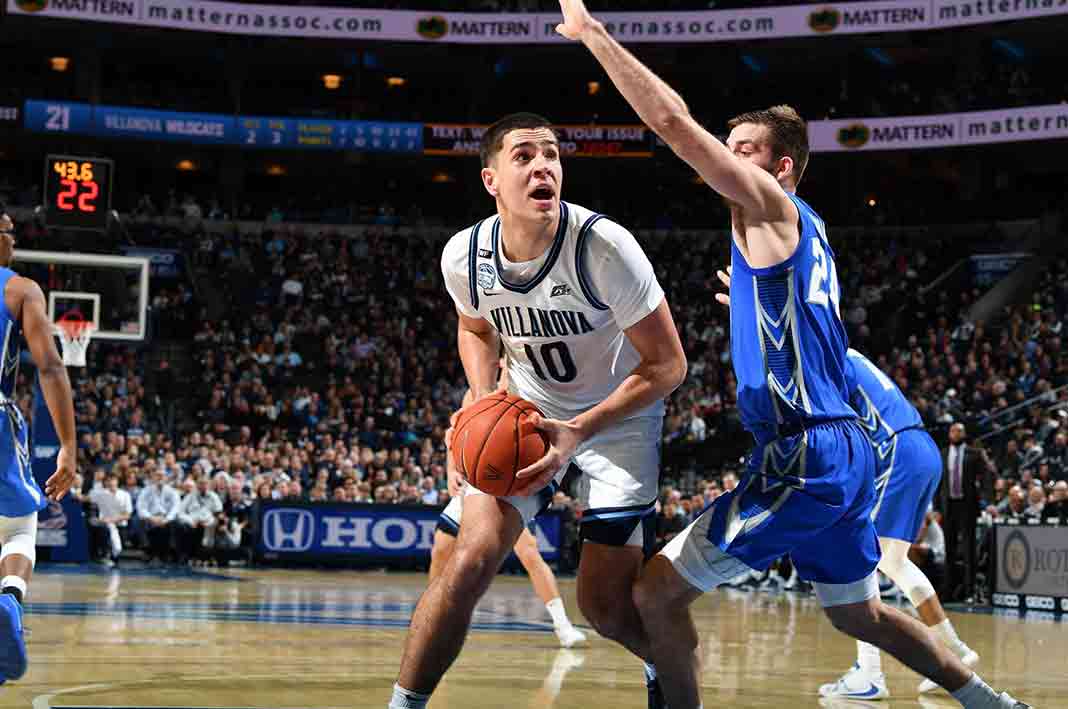
#5 Cole Swider, St. Andrew’s, Villanova (Original Ranking #2)
2019-20 Stats: 18.5min, 6.1pts, 2.9reb, 0.6ast, 0.8to, 44% FG, 35% 3pt, 67% FT
Swider was the top local prospect to come out of New England two years ago as he had positional size, a knockdown jumper, and a swagger to him.
Ironically though, he really struggled to make shots in his first year at Villanova, and consequently saw a lesser role than expected. While his productivity jumped as a sophomore, the 35% from three still isn’t nearly high enough to intrigue NBA scouts, especially with a corresponding 67% from the free-throw line. The silver-lining though is that Villanova is a program that often sees their players take a step forward with each passing year. Swider did that from his freshman to his sophomore year and he’s bound to do it again.
When his full confidence clicks in, he’s just too good of a shooter for those numbers to not jump. When that happens, scouts will take note and when they do they’ll notice the incremental improvements he’s made on the defensive end and with his surrounding floor game as well. In short, it all hasn’t clicked just yet but there’s still plenty of time and lots of talent.
#6 Buddy Boeheim, Brewster Academy, Syracuse (Original Ranking #14)
2019-20 Stats: 35.6min, 15.3pts, 2.2ast, 1.5to, 1.9reb, 1.1stl, 41% FG, 37% 3pt, 71% FT
Of all the perceived shooting specialists in the class of 2018, Boeheim’s game has translated the fastest to the college level as he knocked down three threes per game last year while averaging over 15 points and playing just under 36 minutes per game for a Syracuse team that had won 18 games when the season ended prematurely.
While the skeptics will question how much of an advantage he gets from playing for his father (no one on this list played more minutes) or how many of his defensive deficiencies are hidden by the zone, the productivity level is simply undeniable.
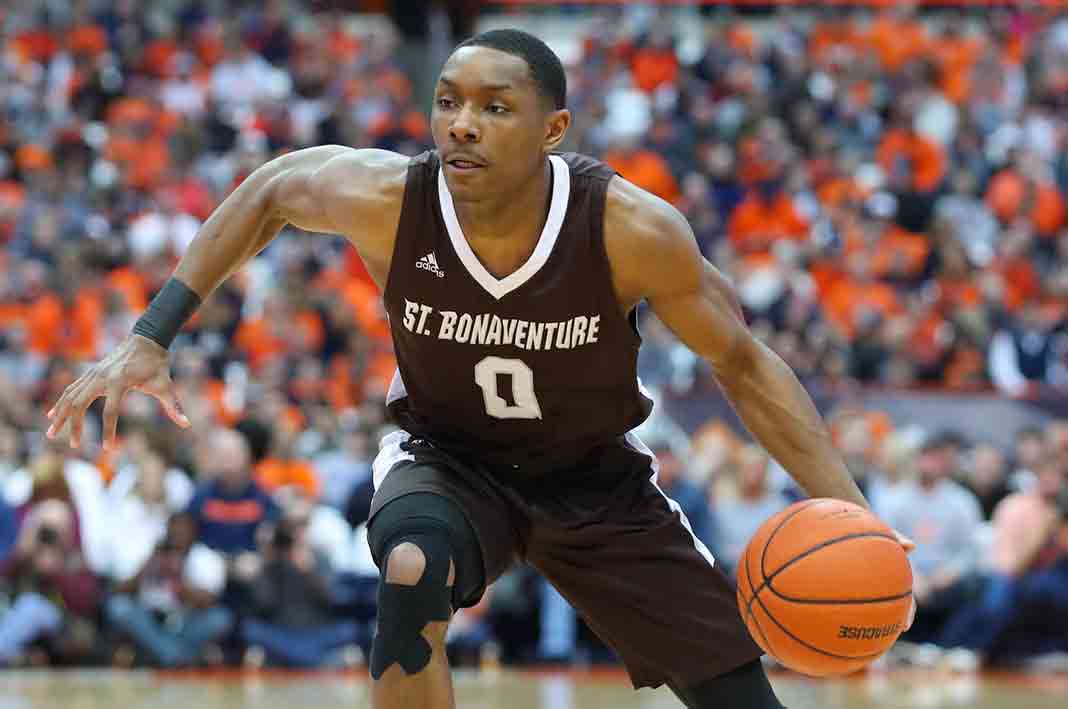
#7 Kyle Lofton, Putnam Science Academy, St. Bonaventure (Original Ranking #16)
2019-20 Stats: 38.4min, 14.1pts, 6.0ast, 2.6to, 2.6reb, 1.4stl, 42% FG, 34% 3pt, 81% FT
It’s hard to imagine that he didn’t have a single D1 offer to his name when he arrived at Putnam Science for his post-graduate year but the consummate late-bloomer was just starting to put the pieces together.
Since then, he’s started every game of his college career, was one of the A-10’s best rookies as a freshman, and one of the league’s best guards period as a sophomore. Long-term, he’s a guy that NBA scouts will be monitoring if he keeps raising the bar with each passing year. His playmaking numbers are all tremendously impressive while his free-throw shooting over the last two years suggests that he’s capable of developing his three-point shooting as well. If that happens, he could very well be a guy who makes it to the highest level.
#8 A.J. Reeves, Brimmer & May, Providence (Original Ranking #5)
2019-20 Stats: 21.9min, 7.4pts, 3.1reb, 1.2ast, 0.8stl, 37% FG, 34% 3pt, 67% FT
He got off to arguably the best start of anyone last year as a freshman, being named the Big East Rookie of the Week in three of the first four weeks of the season before being derailed by injury.
While his sophomore numbers dipped across the board, there’s still reason for optimism. What this last season showed is that Reeves is a shot-maker, not a play-maker, and ultimately that’s nothing new. Now, his 34% three-point shooting is going to have to increase but ultimately that’s going to happen by virtue of playing with guys who know how and where to get him the ball, something he hasn’t had over the last two years.
Like Swider, he’s just too good of a shooter for the numbers not to increase. Add that to his positional size, high-character, and work-ethic and there’s still lots of reasons to be optimistic.

#9 Osun Osunniyi, Putnam Science Academy, St. Bonaventure (Original Ranking #17)
2019-20 Stats: 30min, 10.8pts, 8.4rebs, 2.5blks, 1.2ast, 1.2to, 62% FG, 58% FT
Osunniyi, like Lofton, was a late-bloomer the Bonnies snatched up from Putnam two years ago. Osunniyi actually arrived already committed to LaSalle, but re-opened his recruitment following their coaching change.
In his two years in the A-10, he’s established himself as one of the league’s, and actually the nation’s, elite rim-protectors while simultaneously being a constant double-double threat. Offensively, he may be limited, but he knows his limitations and he’s a vertical spacer, which fits not just the college game but the NBA game if he can keep building up his body.
#10 Noah Kirkwood, Northfield Mt. Hermon, Harvard (Original Ranking #12)
2019-20 Stats: 28.9min, 12.1pts, 3.7reb, 2.3ast, 2.1to, 1.0stl, 45% FG, 36% 3pt, 61% FT
Nate Laszewski was the face of the NMH program two years ago, but Kirkwood was arguably their most productive and efficient player.
That trend has continued at the college level as Kirkwood was one of the more versatile players on a Harvard team that was again vying for an Ivy League championship but their conference tournament was cancelled.
All stats are not created equal though and Harvard’s low-possession style makes Kirkwood’s numbers even more valuable since they account for a higher percentage of the Crimson’s total production.



